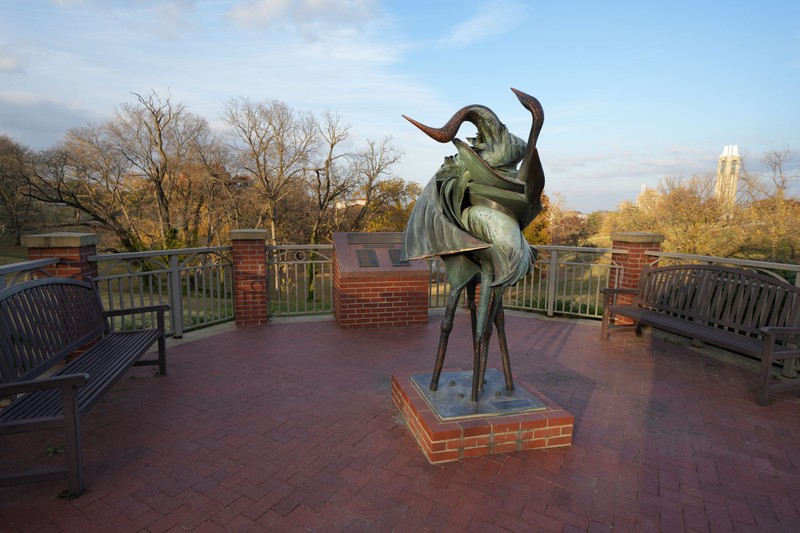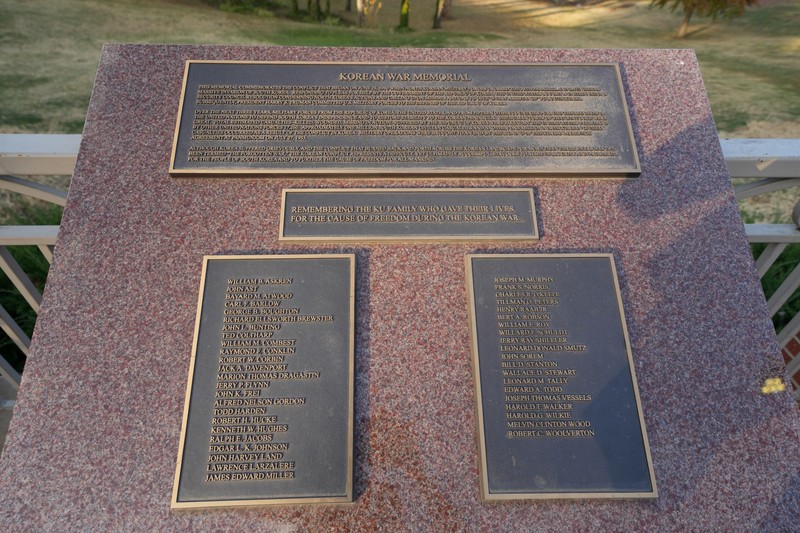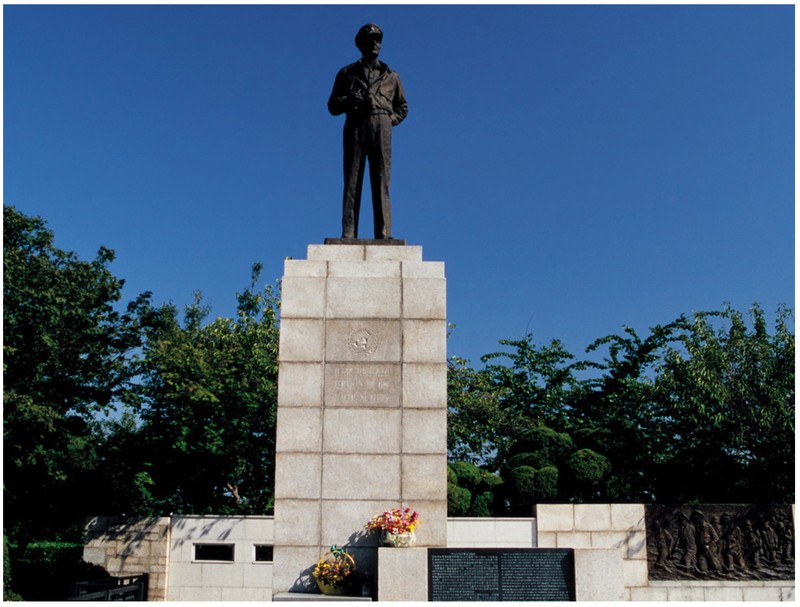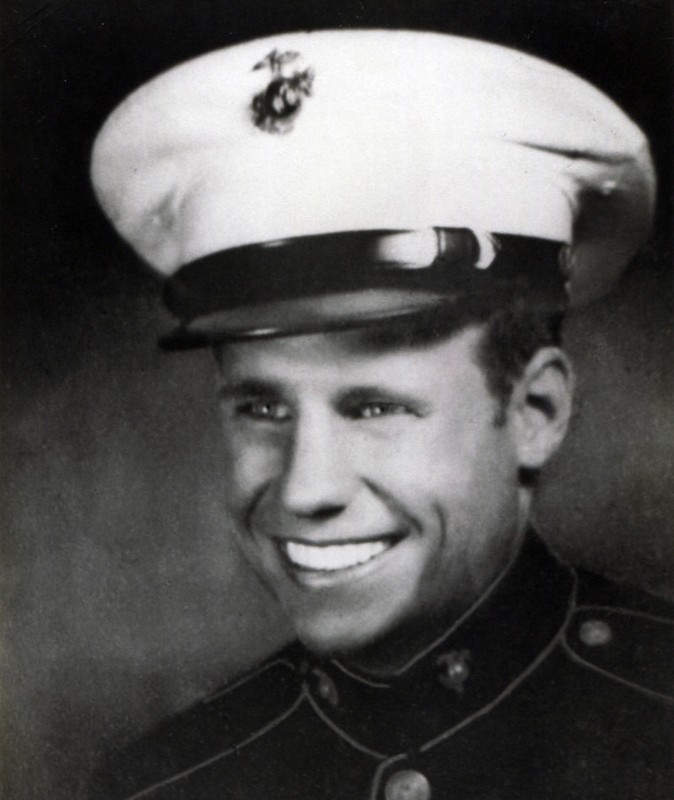Korean War Memorial
Introduction
Text-to-speech Audio
Dedicated in 2005, the memorial incorporates the names of sixty-four members of the University of Kansas community who lost their lives in the Korean War. The monument features four intertwined cranes, each symbolizing the entities that were involved in the conflict — South Korea, North Korea, China and the United States The centerpiece of the monument is a six foot brass Korean Crane sculpture entitled, "Korean Cranes Rising" by the arttist Jon Havener.
Images
The centerpiece of the memorial is the work of art titled Korean Cranes Rising

The monument includes the names of 64 from the KU community who lost their lives in the war

Douglas MacArthur Monument in South Korea

Artist Jon Havener

Jack A. Davenport, One of the 64 who perished in the war

Backstory and Context
Text-to-speech Audio
Efforts to create this monument date back to the 1990s to commemorate the sacrifices of University of Kansas students. The monument was spurred by a large donation KU alumnus, Yong L. Kim Ross. Ross Fitch states in a 2004 article in the Daily Kansan that, “…the project got rolling when Yong L. Kim, Leawood resident, donated $30,000 in June 2003.”In the next two years, $120,000 was raised and construction on the monument began. KU faculty member Jon Havener secured aproval to commission a piece of art that would serve as a symbol of the Korean War. In an interview in the Lawrence Journal by Terry Rombeck, Havener discusses the challenges of making the sculpture “Havener came up with ‘Korean Cranes Rising,’ a piece depicting four intertwined cranes, symbolizing the four entities involved in the conflict — South Korea, North Korea, China and the United States.” Another interesting fact that was brought up when mentioning the design was that “Only five legs support the cranes. Havener said each of the entities lost a leg through battle, and the fifth leg there represents those at KU who lost their lives” As mentioned in an article in the Daily Kansan by writer Dani Litt while interviewing former KU student Jong Woo Han states, “It happily reminds me of an old Korean legend which views cranes as symbols of nobility, serenity and peace.”
As the start of the Korean War was an outcome to the conclusion to WWII, as both Soviet and U.S. militaries occupied Korea after war dividing the country from North to South. Then the UN got involved and was lead by U.S. General Douglas MacArthur. General MacArthur's tactics were considered questionable, leading to protests at the monument to him in Inchon, Korea.
This local monument was dedicated on April 16, 2005 with a ceremony led by the KU Chancellor who told the heroic story of Jack A. Davenport, a university student who saved the lives of his fellow Marines by using his body to protect them from a grenade that was thrown in the foxhole shared by his squad. Davenport was just one of the 64 local soldiers killed during the war, as all 64 names are on a plaque near the sculpture.
Sources
Fitch, Ross. Korean War Memorial to honor 64. UDK Press. Sept. 30, 2004.
Litt, Dani. Not Forgotten: Memorial honors Jayhawks killed in Korean War.
Meditz, Ehren. War memorial receives funding: University accepts donations for memorial, looks back at war heroes with ties to campus. UDK Press. June 18, 2003.
Rombeck, Terry. Finishing touches put on Korean War statue. LJWorld Website. Nov. 28, 2004.
Vockrodt, Steve. Comment needs fact clarification. UDK Press. Sept. 22, 2004.
Photo by David Trowbridge
Photo by David Trowbridge
